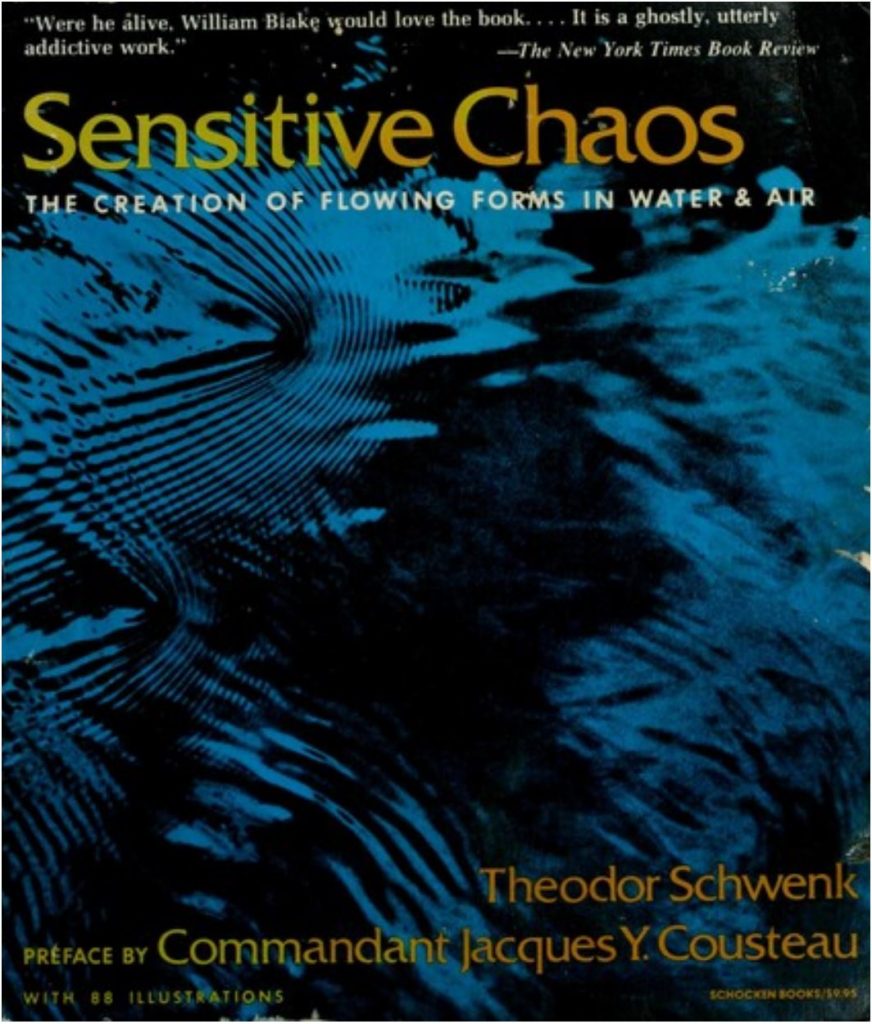Divining the “Sensitive Chaos”


We all know that water is essential to life, but do we know why, or to what extent the presence of water influences living organisms. Here Eric Herman shares insights found in an amazing and venerable text written in the 1960s known as “The Sensitive Chaos” a treatise on the influence of water that touches all aspects of biological science, as well as geology and weather patterns.
By Eric Herman
There have been a number of terrific books about water, including Wallace “J” Nichols “Blue Mind” and “Water: A Biography” by Giulo Boccaletti (the subject of an upcoming review in these pages) and many other worthwhile and even transformative reads.
One of the most intriguing and I dare say inspiring books about H20 first appeared in Germany in 1965, and was shortly thereafter translated to English. Titled “The Sensitive Chaos: The Flowing Forms in Water and Air” by researcher and industrialist Theodor Schwenk (Rudolph Steiner Press), it is a book that looks at water as a living element as opposed to a valuable natural resource and in doing so, opens an aperture in the basic processes of the earth’s hydrosphere, atmosphere and life itself.
Although 55 years old and now in its 5th edition, Schwenk’s work remains one of the seminal texts defining the dynamics of water and air as they work to sculpt and define our world. Schwenk was studying the behavior of liquids and gasses in order to increase efficiencies across a range of industry and particularly chemical engineering applications. He was intrigued with the oscillating dynamics of water and how it influenced everything from the course of rivers to its behavior highly controlled hydraulic processes.
The iconic title was coined by Jacques Cousteau, who references the term in a preface he wrote after having read the text. Speaking of his early days exploring the world’s ocean, Cousteau wrote, “There arose the living sea a hymn to the ‘sensitive chaos’. All that life around us was really water, modelled according to its own laws, vitalized by each fresh adventure, striving to rise into consciousness.”
While there is an obvious philosophical bend to Schwenk’s work, the book remains steeped in verifiable science. At the core, the premise follows that water’s inherent physical nature influences everything it flows through and everything that forms within it. As he illustrates in words and hundreds of sketches, water is responsible for repetition of patterns in nature and especially living organisms.
“Wherever water occurs it tends to take on a spherical form,” Schwenk writes in an early chapter titled “Archetypal Movements of Water”. “It envelops the whole sphere of the earth, enclosing every object in a think film. Falling as a drop, water oscillates about the form of a sphere; or as dew fallen on a clear and starry night, it transforms into an inconspicuous field into starry drops.”
This, he explains, is why rivers bend and why currents and hurricanes take on spiral forms, and why the blood vessels in our eyes have patterns that are very much the same as veins in a maple leaf. “Not only is it a ‘body’, subject to gravity, it is also an active element and the foundation of life.”
This fundamental physical nature influences everything from how water flows through a pipe, to how bones and muscles form during gestation in the womb to the action of waves breaking on a beach. He explains: “When different wavelengths intermingle with one another, patterns, structures and formations arise, which originate purely out of movement.”
Schwenk’s work is remarkably well-referenced and science based. The big ideas he articulates are explained in clear and uncomplicated language that lays bare the essence of water and how it has always influenced our world. For those of us who are fascinated by water and its role in our lives, taking the time to divine the nature of the Sensitive Chaos is time well spent.










